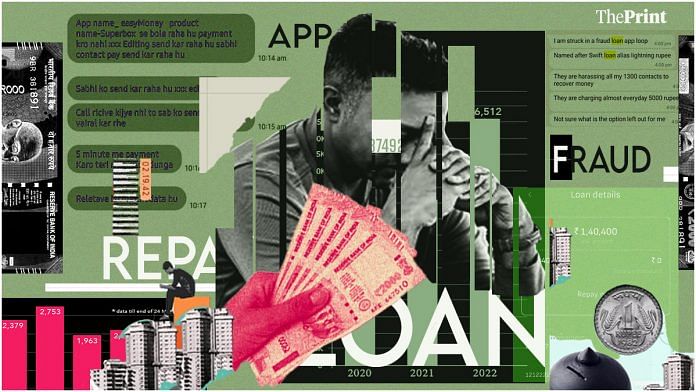There have been many reports about the aggressive tactics used by the loan recovery agents of digital lending apps, including harassment not just of borrowers but also of their friends and family. At the same time, there appears to be an industry of ‘scammers’ who defraud digital lending apps by creating fake IDs and digital trails.
In navigating these challenges, it is helpful to consider the overall funding and regulatory environment within which the sector operates. It is also important to exercise caution in our quest for consumer protection and not throw the baby out with the bathwater.
A greater perspective can be gained by looking at parallels between the early days of microfinance and the present digital lending scenario. Both emerged to fulfill the unmet credit needs of underserved populations but encountered similar challenges, including the prevalence of predatory lending practices and unintended fallouts of regulatory responses.
Also Read: Pay attention to states’ treasury. If it gets worse salaries and pensions will be affected
The digital lending ecosystem
In the last few years, as internet and smartphone penetration grew, innovation in lending shifted to loans on digital devices. Individuals can now apply for loans with just a few clicks on a digital lending platform.
The platform assesses the documents submitted by the applicant and, within a few hours or days, provides a small-ticket loan with a tenure of 3-6 months. Lenders can make quick decisions based on payment and other transactional data on the applicants’ phones. Models of underwriting based on such “alt-data”— drawn from non-traditional sources— enable access to finance to those underserved by the traditional banking system.
The digital lending market was worth $270 billion in 2022 and is expected to reach $350 billion by the end of 2023. Digital loans comprised about 8 per cent of unsecured personal loans in FY23, up from about 5 per cent in FY20.
According to the ‘FinTech Lending Trends FY22-23’ report by FACE-Equifax, Tier-3 cities constitute 40 per cent of the market, and 80 per cent of the borrowers are under the age of 40. The average loan amount is about Rs 13,000.
The growth in digital lending has been accompanied by a fair share of complaints, especially against illegal digital lending apps. In response, the Reserve Bank of India constituted a working group on digital lending and, based on its recommendations, established a set of guidelines on digital lending. According to these guidelines, regulated entities (REs) such as banks and non-banking financial companies (NBFCs) can enter into outsourcing relationships with lending apps. However, the responsibility of lending remains with the regulated entity.
The RBI also allowed First Loss Default Guarantee (FLDG) for digital lending fintechs. If a customer defaults on a loan up to a certain threshold of the loan portfolio, the fintech takes the first hit and compensates the lender (bank or NBFC). With this, the RBI ensured that banks did not face the brunt of a potential spike in loan defaults.
Last week, the RBI also increased the risk weights for unsecured loans to 125 per cent to “dampen growth in consumer loans”.
Also Read: Cousin took a loan but couldn’t pay it back? As recovery agents run amok, even you aren’t safe
Parallels with microfinance
In the early 2000s, we were all fascinated by microfinance. Small-value loans given to women-led groups with joint liability were considered the future of financial inclusion. But even then, there were concerns about predatory lending and coercive loan collection practices. The effective ban on microfinance in Andhra Pradesh in 2010 led to a regulatory overhaul in the sector, with the RBI recognising a new class of regulated entities, namely the NBFC- microfinance institutions (NBFC-MFIs). Despite the lending models being different, there are several parallels between then and now.
First, non-traditional players such as microfinance and digital lending cater to an unmet demand for credit. Accessing banks and formal financial institutions remains cumbersome, and the appeal for more accessible credit is underestimated. By licencing only a limited set of players, we may be pushing multiple sources of credit into the unregulated space. The RBI’s response to the microfinance crisis increased capital requirements to qualify as an NBFC-MFI, leading several smaller and more innovative organisations to fold their operations.
Second, there is a link between the funding of lending organisations and the stress on collection. In the case of MFIs, a substantial amount of capital came from the directed lending portfolios of banks. There were concerns that if multiple MFIs suffered losses on their portfolios, the underlying books of the banks may also take a hit.
Digital lending fintech firms, too, are seeing a difficult funding environment, with valuations falling, deals getting delayed, and the higher risk weights imposed by the RBI. The pressure to ensure high repayment rates is huge. The question is whether a tight funding environment upstream can create incentives for loan forgiveness or restructuring at the retail level. This may only be possible when firms are able to charge higher rates for performing assets to compensate for the losses on non-performing ones.
Third, all demands for repayment made by financial firms may not be unreasonable. The premise of credit is that it needs to be repaid. While violence cannot be an appropriate response, other strategies, such as repeated calls, may be an acceptable tool for collection, at least up to a point.
We need better enforcement of ‘acceptable’ methods of credit recovery. It is possible that poor collection practices are largely employed by lenders who have missold credit products to financially unsophisticated borrowers, leading to high delinquencies.
But financial regulation alone cannot solve the problem. Improving financial literacy and empowering people to discern good lenders from the bad will be required to combat unethical sales practices.
Renuka Sane is research director at TrustBridge, which works on improving the rule of law for better economic outcomes for India. She tweets @resanering. Views are personal.
(Edited by Asavari Singh)



